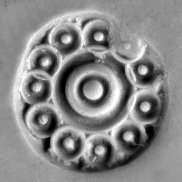CMS Databases
Within the framework of the CMS project in Marburg the material published in the CMS series was digitalized and recorded in the CMS Databases. The Seals Database documents the seals and their ancient impressions. The Sealings Database records the objects displaying ancient seal impressions.
The databases contain revised data in line with current insights of Aegean glyptic research. Many corrections of the data provided in older volumes have been undertaken and better images are often available. Therefore, the user will find a revised version of the CMS volumes in the CMS Databases. Consequently, the information in the former will often differ considerably from the data found in the printed volumes.
The language of the Databases is German. However, we are making here available a German-English and an English-German glossary with the search terms in the two languages. These make it possible for the non-German speaker to use the database. The English translation of the terms was undertaken by Olga Krzyszkowska. In a third glossary you will also find the names of the locations as they are transcribed in the Databases.
The CMS Databases are integrated in ARACHNE, the Central Object-Database of the German Archaeological Institute and the Archaeological Institute of the University of Cologne, and are freely available on the web. In order to access higher resolution images, the user is advised to register with ARACHNE (free of cost). If you need images for publication, contact us here.
Restricted functionalities of the CMS Databases since April 2023
As of April 2023 ARACHNE has a new interface, which does not show all the search fields and lists of terms that were available in the original CMS Databases. However, it is still possible to search the Databases if the search terms are known. In order to do this, type in the search field of Arachne 'cms' and then the search term, e.g., 'cms Frau' (cms woman). It is also possible to do combined searches, e.g., if you want to search for a lentoid with a woman and a goat type 'cms lentoid Frau Ziege' (cms lentoid woman goat). The search terms of the Databases can be found in the glossaries.


